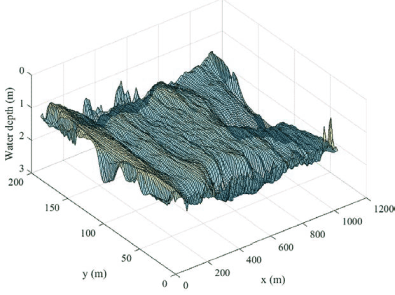Underwater drones are reducing the effort and cost of mapping sludge build-up in wastewater treatment lagoons, helping to ensure their treatment efficiency. Read this case study to learn more.
Sustainable Development Goals:
Goal 6: Clean water and sanitation
Goal 9: Industry, innovation and infrastructure
Background
Lagoon-based wastewater treatment plants, such as our Western Treatment Plant, provide a relatively low-cost way to treat wastewater.
The recycled water they produce is vital for valuable agricultural industries during drought, as well as reducing the demand on potable water supplies. But over time, sludge build-up in wastewater lagoons reduces their treatment efficiency.
To de-sludge a lagoon, we must first determine how much sludge has accumulated and where. However, the large-scale lagoon systems at the Western Treatment Plant make this difficult – the largest lagoon is over 1 million square metres. Traditionally, methods to measure sludge height have been low resolution and labour intensive, such as using a boat and a graduated pole.
Research focus
Recognising an opportunity to automate the process and generate high-resolution sludge mapping data, we partnered with the University of Western Australia to co-fund the development of remote-operated vehicle bathymetry mapping technology and its associated software. (Bathymetry is the measurement water depth in oceans, seas or lakes.)
Outcomes
To date, we have mapped sludge bathymetry of 13 large Western Treatment Plant lagoons – including nine of the 10 ponds that produce recycled water for the Werribee Irrigation District. This work is ongoing, with plans to complete mapping of the plant’s remaining lagoons during 2020 and 2021.
These results are helping to prioritise ponds for de-sludging, and helping ensure recycled water meets quality targets.
The University of Western Australia is now exploring ways to optimise this technology to further reduce the time and cost of lagoon sludge mapping.
You may also like...
Delivering on the Sustainable Development Goals
This report outlines Melbourne Water's unwavering commitment to advancing sustainability through the United Nations Sustainable Development Goals (SDGs).




